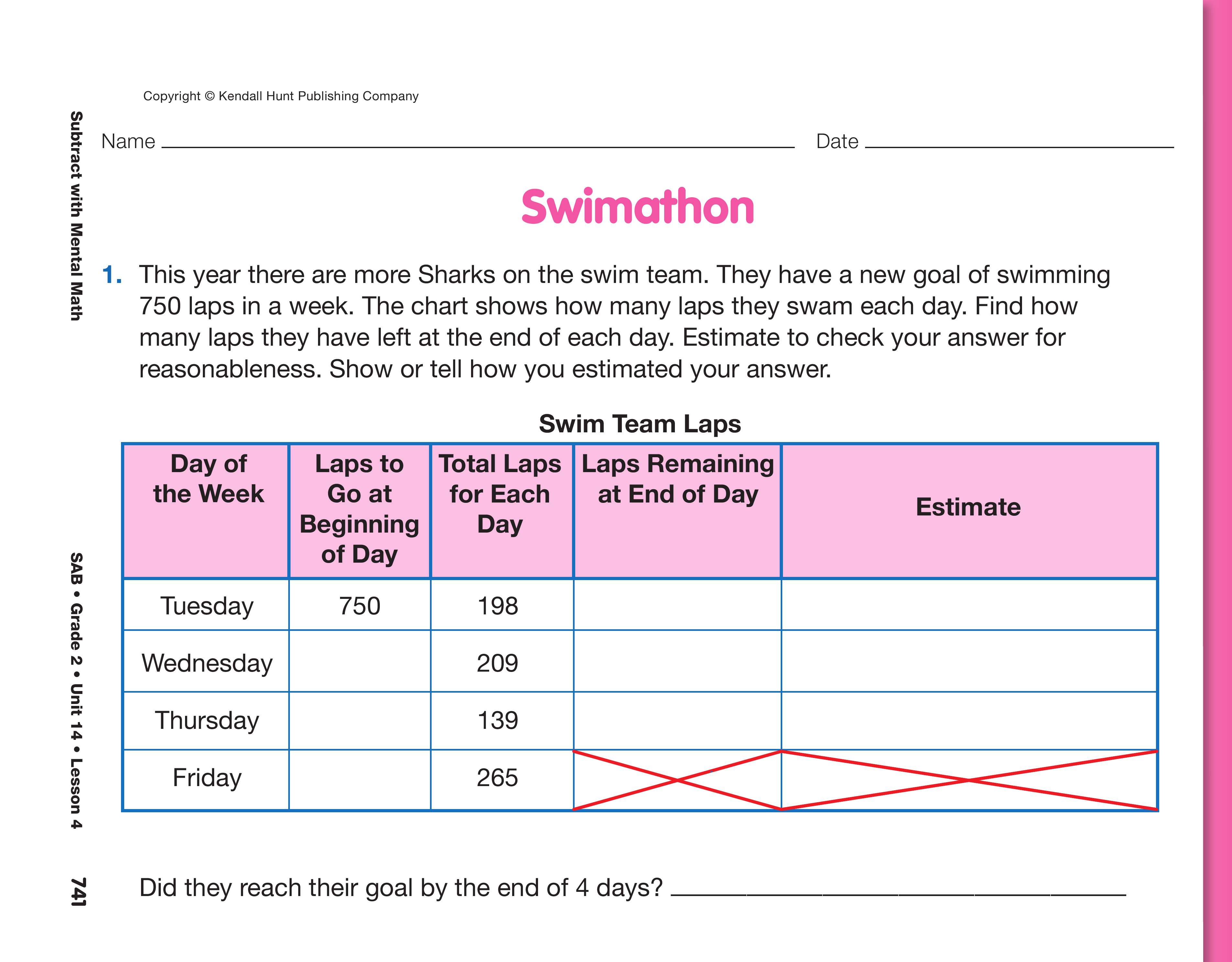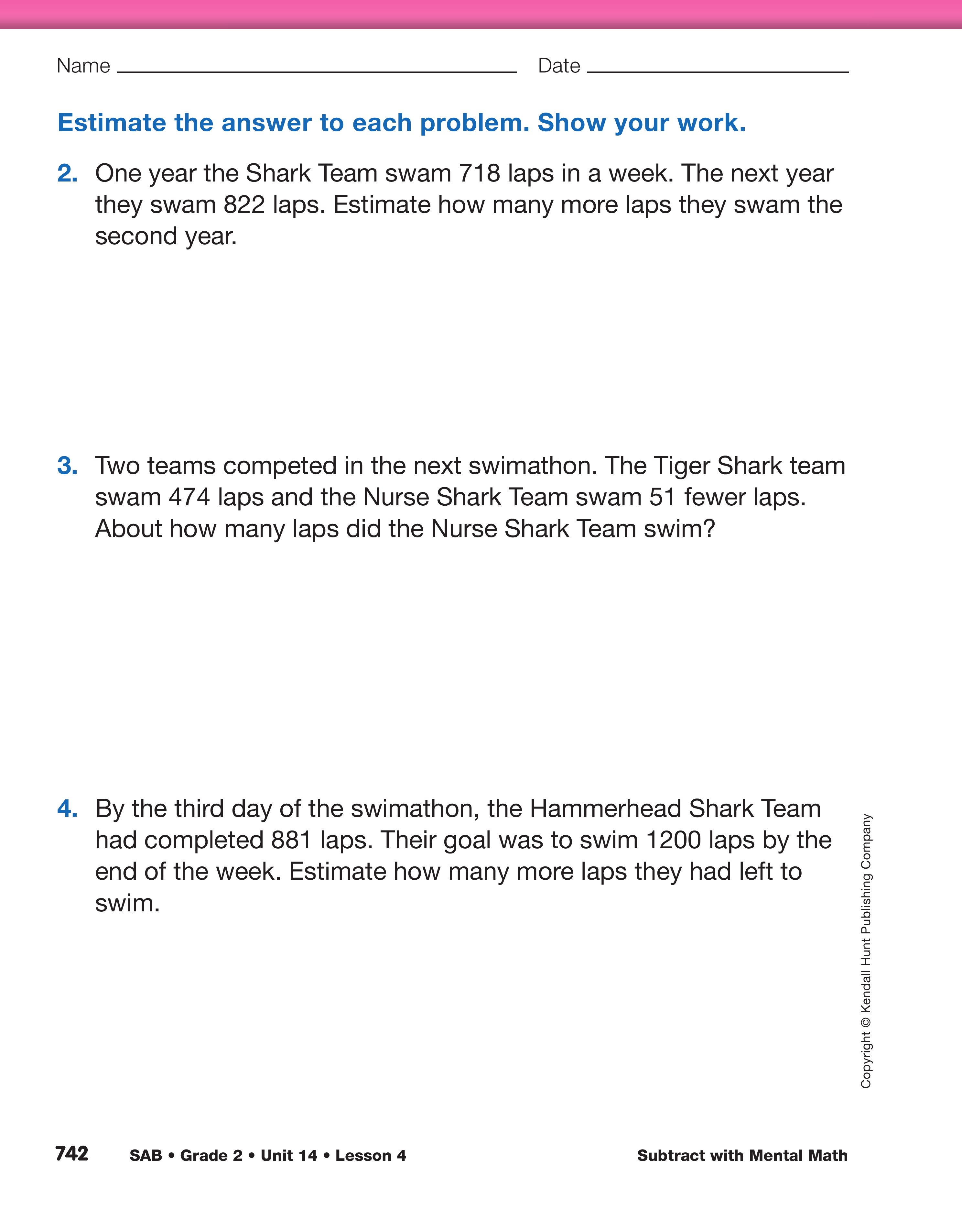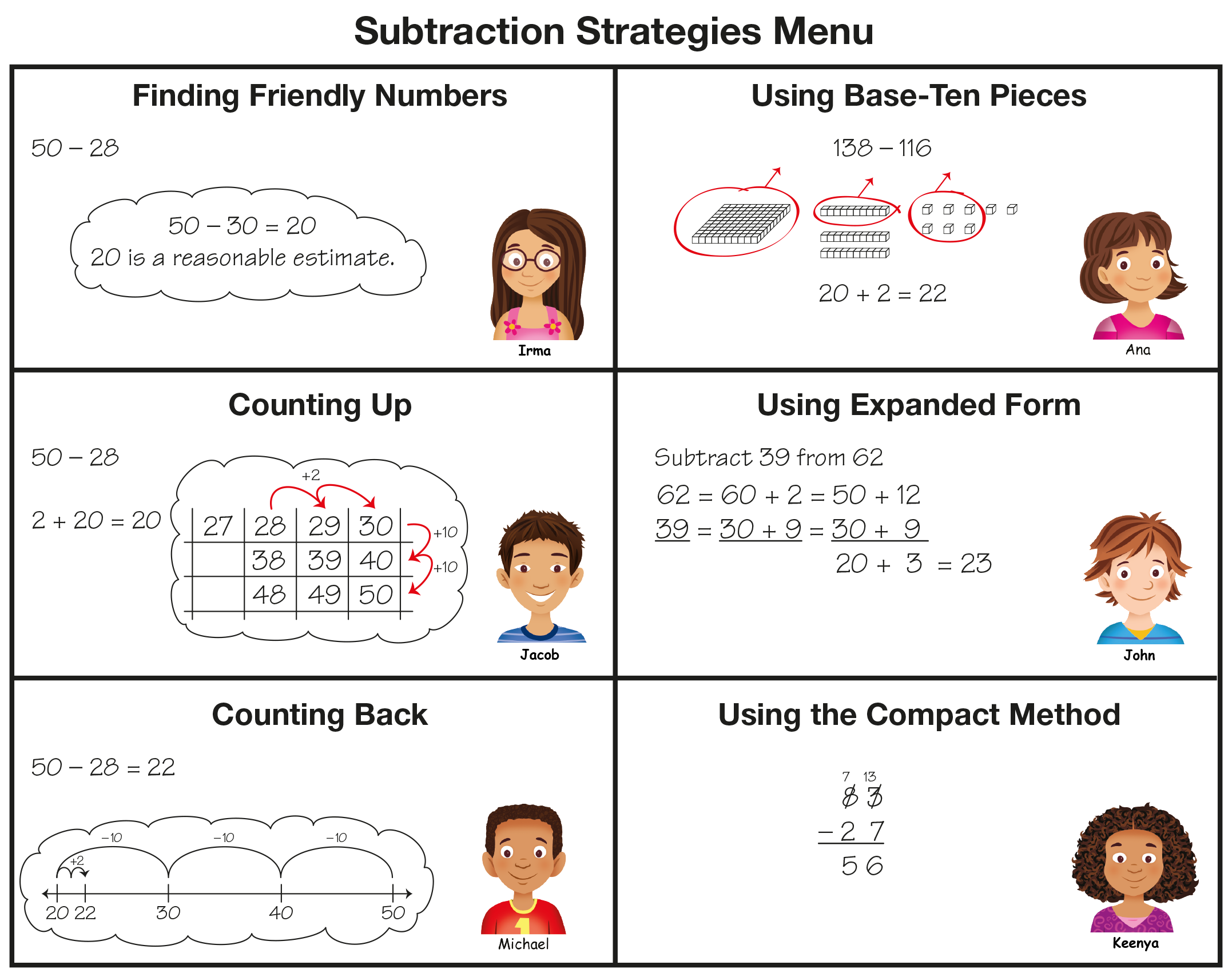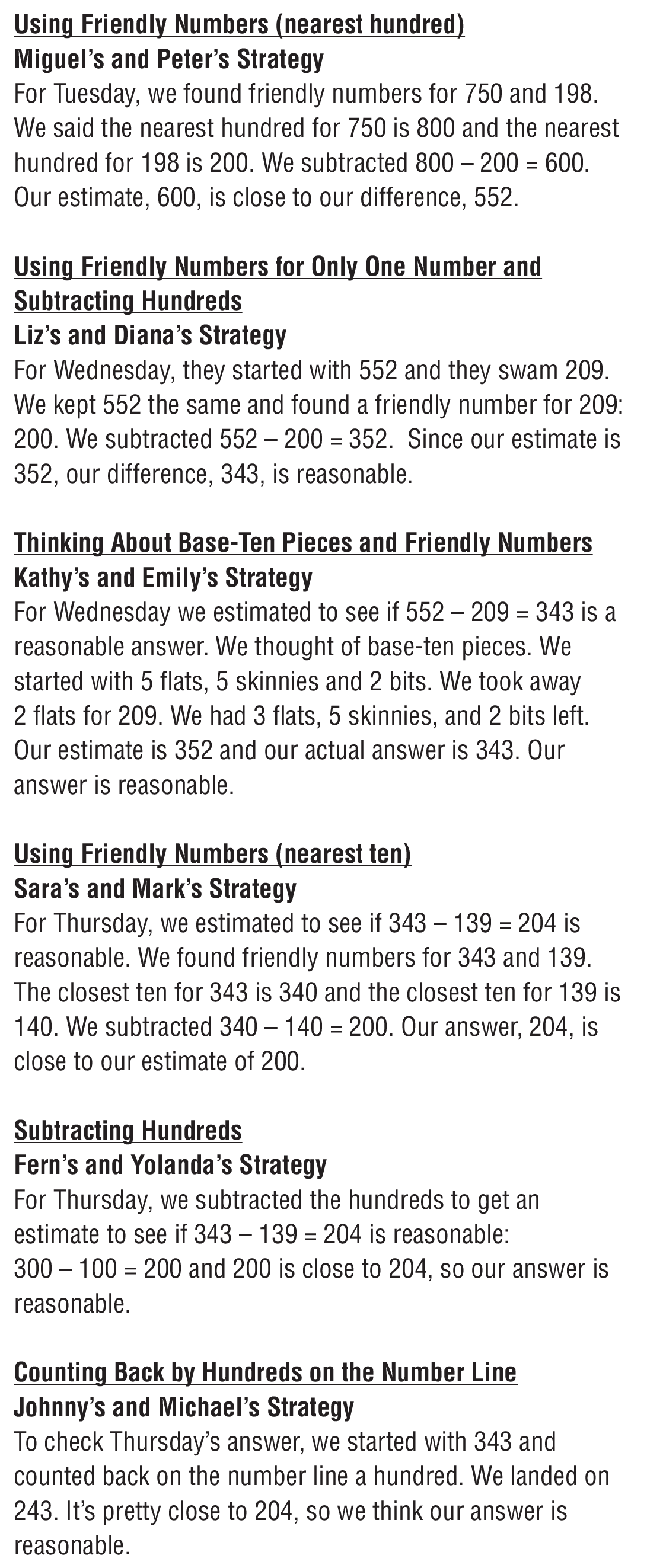Subtract with Mental Math
Est. Class Sessions: 2Developing the Lesson
Part 1: Using Estimation Strategies
Review Estimation Strategies for Addition Chart. Use the Estimation Strategies for Addition chart to review the strategies students developed for estimating sums in Lesson 2 of this unit:
- Using Friendly Numbers (Closest 100)
- Using Friendly Numbers (Closest 10)
- Thinking about Base-Ten Pieces
- Counting On by Hundreds and Tens
- Adding Hundreds
- Composing and Decomposing Numbers
Explain to students that they will be using similar strategies for estimating differences.
Ask:
Modify the estimation strategies and write them on the new Estimation Strategies for Subtraction chart you prepared prior to the lesson. See Materials Preparation.
Read Shark Swimathon. Use the book Shark Swimathon to review estimating differences for two-digit numbers. Shark Swimathon is a story about a group of sharks that have to swim 75 laps by the end of the week. Each day, they subtract the total number of laps they swam from the total number remaining. As you read the story, have students estimate the reasonableness of each difference.
Ask questions such as the following:
Show students the actual answer is 44.
Find Differences and Estimate for Reasonableness. Use the display of the Swimathon page in the Student Activity Book to introduce the activity. For Question 1, ask student pairs to find how many laps the sharks had left to swim at the end of each day and to check their answers for reasonableness by estimating the differences. Encourage students to refer to the Subtraction Strategies Menu in the Student Activity Book Reference section and to use what they know about subtracting two-digit numbers to solve the subtraction problems with three-digit numbers on the chart. See the Content Note. Have the Estimation Strategies for Subtraction chart, the Subtraction Strategies Menu, open number lines, and base-ten pieces readily available.
Circulate around the room and observe students as they develop strategies for finding the difference and estimating for reasonableness. Look for interesting strategies that students can demonstrate to the class.
Upon completion, have student pairs share their strategies.
Ask:
See Figure 1 for possible strategies for finding the differences on the Swimathon page.
Use the display of the Swimathon page in the Student Activity Book to fill in the chart and discuss estimation strategies.
See Figure 3 for possible estimation strategies.
Add the estimation strategies students used for the Swimathon page to the Estimation Strategies for Subtraction chart. In Figure 3, some of the strategies used were:
- Using Friendly Numbers (nearest hundred)
- Using Friendly Numbers (changing only one number, usually the number to be subtracted)
- Using Friendly Numbers (nearest ten)
- Subtracting Hundreds
- Counting Back on the Number Line
- Thinking about Base-Ten Pieces
As a class, discuss why students have different estimates.
Ask:
After discussing the estimation strategies students used for Question 1 on the Swimathon page in the Student Activity Book, ask student pairs to estimate the answers for Questions 2–4. Have the Estimation Strategies for Subtraction chart, open number lines, and base-ten pieces readily available.

























